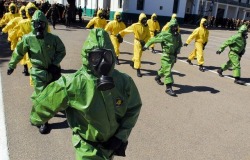Brazil
Growth in social and enviormental movements
In contrast to developed countries, Brazil had few organizations, intrest groups, associations, leagues, clubs, and NGO'S up until the 1970's. This lack of meditation between government and society was characteristic of a paternalistic and authoratarian social structure with a small but powerful elite and dispossessed majority. during the 1970's and 1980's however, in part because of the growth of the middle class, a wide variety of social movements and local and national organizations appeard and expanded. Many engaged in political activity. Women's groups also appeard. Increasingly, social and political organizations reached into the lower classes. A significant number were connected directly or indiretcly to the Roman Catholic Church, which sponsored the CEBs [Eccslestial Base Communities] as a part of it's option for the poor. Independent labor movements also grew during the 1980's. people took to the streets in 1984 to press for direct elections for president, as they did in 1992 to demand the impeachment of president Collor De Mello. Once a new constitution was written 1988 and a president was chosen through direct election in 1989, oppisition or resistance movements were forced to redefine their roles. Many o them made a transition from protest and denuncation to provide more contructive contributions in the area s of health, education, and social services.



